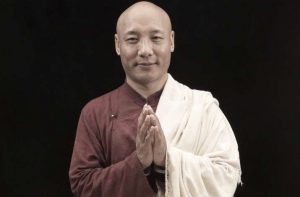
Ajahn Lee Dhammadaro (1907–61) was a Thai monk in the Thai Forest Tradition of the Dhammayuttika Order who was adept at using common comparisons to explain mind development.
In this essay based on Ajahn Lee’s teachings, in the beginning, just as in improvising on song structure, I’ll follow Ajahn Lee’s groove as the lead-in to paraphrase and riff on the chord-development in the middle, before, returning to and signing off with a chorus.
In a talk given in August 1957, titled “Food for Thought,” Ajahn Lee compared meditative development to feeding the mind the right kind of nourishment.
He began his talk by saying that there are two kinds of food for the mind: first, there is mental nourishment which gives us strength; and second, there is the kind of mental nourishment that diminishes our strength.
Such so-called mental foods can be broken down into three types of nourishment: first there is the nourishment of sensory contact, where the eye, ear, nose, tongue, body, or mind make mind/body contact with objects of perception; second comes the food of consciousness, which takes place when sight, sound, smell, taste, touch, or thought make contact with objects of perception; and third is the food of intention, where the heart reacts to contact thoughts of past or future experiences, judging each perception in a biased manner as good or bad, pleasant or painful or neutral.
Once we see how such intentions of the body and mind can lead to actions and reactions, we realize why and how we need to pay heed and exercise careful attention.
So we develop discernment to know how an intention will lead to a harmless or harmful action, and a good or bad consequence, so we learn to choose wisely to avoid acting carelessly. Discernment is what gives us the option either to chew good food slowly or to bite off and spit out bad food quickly.
When we were newly-born infants, our parents minced and strained our food. But once we developed teeth, we had the choice between consuming whole, healthy food or crude unhealthy food.
Once we became more discerning, we were able to avoid eating the unhealthy, unwholesome food and eat only wholesome nourishment. For example, it would be unwise to consume an entire fish, including flesh, bones, scales, fins, and tail, and possibly choke to death.
So when we are wise and mindful, we will prefer fine, internal, spiritual sustenance over superficial, conditional, external nutriment.
We develop the discernment to determine the difference between higher and lower energy vibrations and choose the former rather the latter. We learn to use the knife of discernment on a chopping-block, cutting away any unwholesome, unhealthy contacts; cutting away the outer peel to reach into the inner core.
We watch and catch an impure perception as it is becoming an intention and we chop it off before it can become a base and immoral action. This means that when we discern the quality of an intention, we choose between allowing a good intention to become a good action or allowing a bad intention to become a bad action.
Right view may be explained as follows: imagine we have two eyes, and one eye can sees the good in the bad side, and the other eye can see the bad in the good side.
Just as there are two sides to a coin, so conditioned experience contains its opposite. A sensation feels happy then slowly becomes sad as the sensation begins ending. Just as the Sun and the rain can be considered good or bad, so life can become a uncertain balance between opposing forces.
A well-developed life can be compared to steering with the wheel of a sturdy sailing vessel, harnessing a forceful wind to cut through heavy seas. The steersman must try to remain on course by continually adjusting the wheel, maintaining momentary balance between the opposing forces of stormy winds and whipping waves.
Steering a steady course in heady winds is not easy, but once the steersman has become well-weathered and skilled, dependent on discipline and endurance, he continues correcting the heading.
Now, let’s return to food imagery. We have to be selective concerning what we wish to consume. Sugar and honey can be very sweet to eat, but may also attract flies and worms, which also like to eat. Therefore, too much of a good thing upsets the balance, causing anxiety and stress,
Too much money is hard to manage and balance and soon becomes a headache, whereas too little money leads to near starvation and is hard to bear.
When we lack awareness or discernment, when we lack mindfulness and restraint, we can keep gobbling down all the sugar and honey buns, oblivious to any hidden worms and germs and careless of the consequences until insatiable craving becomes harmful and eventually ruins our health.
In such cases, no one can help us gain discernment except ourselves. So we have to learn to stay neutral, steering a middle path: not being pleased with the pleasant; not hating the hateful; but being dispassionate, calmly keeping cool in the middle, not attached to anything.
Once we have developed discernment, we will know how to deal with sights, sounds, smells, tastes, touches and thoughts, without becoming attached.
Once we understand that good has a bad side, and bad has a good side—in the same way that the Moon has both a bright and dark side—then we won’t become attached to sights, sounds, smells, tastes, touches or thoughts. We discern their transient nature and we know how to avoid attachment by just letting them flow away.
The mind likes two kinds of food: the first is good and the second is bad. Seeing what is wholesome and good nourishes and strengthens the mind. When we discern conditions clearly, we eat good food, but when we fail to discern the dangers of attachment, we eat bad, which can slowly poison and destroys us.
Meditation is like fire, concentration a cooking pot, mindfulness a chopping block, and discernment a knife that we use to chop-away the harmful parts.
When we’re wise, we will use these cooking tools to prepare good, nourishing food. We then absorb nourishment from the Dhamma, which will strengthen our hearts in the five following ways:
1. The Dhamma strengthens conviction in the truth, based upon empirical experience.
2. The Dhamma strengthens persistence, like the wheels of a powerful vehicle consistently propelling energy toward a wholesome goal, so we gain trust based on consistency.
3. The Dhamma strengthens mindfulness, based on knowing when to open and close the windows and doors of perception and intention.
4. The Dhamma strengthens concentration, becoming firmly established in the mind, whether we are sitting, standing, walking, reclining, thinking, speaking, or listening, so that we can listen clearly and speak truly, without bias.
5. The Dhamma strengthens discernment and wisdom regarding arising phenomena, so that we attain purity of mind by letting go of thoughts of the past and the future; becoming impartial without being pleased or displeased by contacts with sights, sounds, smells, tastes, touches, or thoughts.
In short, if, with right intention, we feed the mind wholesome nourishment, the consequences will be mental peace and contentment.
Related features from BDG
Sixteen Poisons Polluting the Mind
Fire Imagery in the Pali Canon
Keeping Kammic Balance














